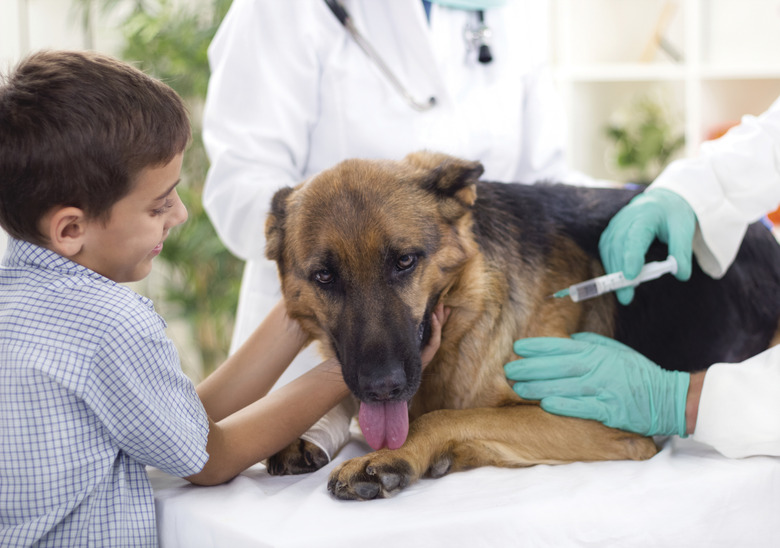Dog Rabies Vaccination Side Effects
The rabies vaccine is given to dogs to prevent exposure to the disease, which is spread through the bite of rodents and other wild animals. Rabies is almost always terminal when symptoms are already showing. The rabies vaccine has reduced the number of cases in the U.S. from around 100 to just a few each year. Unfortunately the side effects caused by the vaccine can be as bad as the disease in some cases.
Allergic Reaction
Allergic Reaction
Dogs who have an allergic reaction to the rabies vaccine may suddenly fall into anaphylactic shock. This results in difficulty breathing, an elevated heart rate, swelling, itching, diarrhea, general shock and in some cases, death. The reaction can occur after the first, second or third vaccination in the series. Antihistamines are used as treatment to block the reaction.
Autoimmune Hemolytic Anemia
Autoimmune Hemolytic Anemia
Autoimmune hemolytic anemia is a blood disorder that sometimes results from the rabies vaccine and causes a reaction against the body's red blood cells. Symptoms include weakness, fatigue, elevated heart rate and breathing problems. Lifelong steroidal treatment and transfusions may be required in this instance.
Local and Systemic
Local and Systemic
Hardened skin and flesh can result in the immediate area where the shot was administered. This granuloma appears soon after vaccination and can be treated topically. Common systemic reactions include fatigue and depression, as well as a minor case of rabies symptoms themselves. These typically clear up on their own.
Always check with your veterinarian before changing your pet's diet, medication, or physical activity routines. This information is not a substitute for a vet's opinion.
